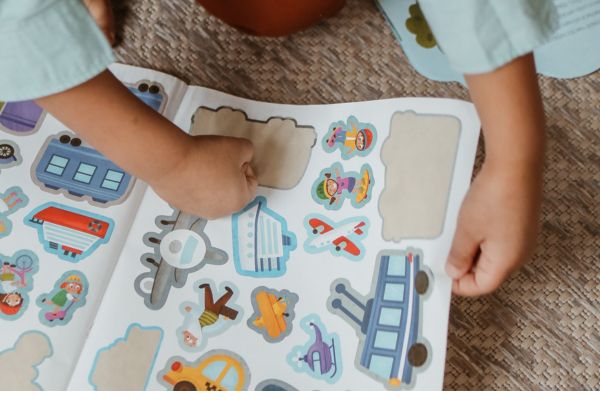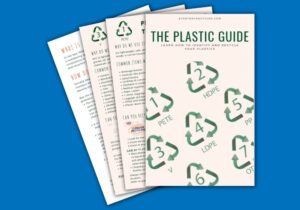There might be a lot of talk about reusing and recycling these days but taking discarded materials and turning them into something new is by no means a modern concept. People have been discarding and reusing materials for a very long time ago. In fact, the first record of recycling is back in 1031 in Japan.
History of Recycling Timeline
1031 – Japanese people recycled paper in a circular process of paper production, consumption, and recycling.
A very early form of the curbside collection was used in the medieval period when “cart men” would travel from home-to-home collecting refuse.
1690 – The Rittenhouse Mill in Philadelphia, US, starts recycling old clothing, linen, and cotton rags to make paper used for printing and newspapers. The mill operated until the 1800s.
1776 – During America’s war of independence from the British, a statue of King George III was torn down and recycled into bullets. They created 42,088 bullets from the statue.
1813 – The Shoddy process was invented by Benjamin Law. He took old clothes and rags and recycled them and re-spinning them into wool. By 1860 the shoddy industry produced more than 7000 tons of recycled wool every year.
1865 – The Salvation Army was established in London, England. They employed unskilled workers to collect discarded goods from households for reuse and recycling. Its success resulted in an expansion to the United States 30 years later. Today the Salvation Army has a presence in 132 countries and continues to collect discarded items through its thrift stores.
1890 – The British Paper Company was established to make paper and cardboard from recycled materials. The materials were collected by cart men and other organizations like the Salvation Army.
1897 – New York Established the first materials recovery facility where usable materials like metal, paper, burlap, and even horsehair were separated from the trash and sold.
1904 – The first Aluminum recycling plant was created in Chicago, Illinois, in the USA.
1914 to 1945 – during the first and second World Wars, recycling was an essential part of maintaining the war effort. Both the US and Great Britain appealed to the public for help, asking people to think more about what they threw away. Recycling materials like tin, rubber, steel, paper, and even cooking oil was encouraged. During the war times, reuse and recycling were also a means for many people to make a living by selling reclaimed items or materials.
1930 – During the great depression, people were encouraged to reuse and recycle everything they could. A common saying was, “use it up, wear it out, make do or do without”.
1950’s – the arrival of the throwaway society. Encouraged by marketing and access to a whole raft of new products, societies across the United States, in particular, embraced “Throwaway Living”.
1960’s – The first curbside program was established to collect yard waste, metals, and paper.
1964 – the aluminum industry moved to all aluminum cans making recycling new cans much easier.
1970 – The first Earth Day was celebrated on 22nd April 1970.
1970 – The Mobius Loop symbol synonymous with recycling, the chasing arrows recycling symbol, is created by a college student Gary Anderson.
1976 – In the USA, the Resource Conservation and Recovery Act (RCRA) governing the disposal of solid and hazardous waste was signed. The law addressed the increasing problems the nation faced from the growing waste issues.
1971 – Oregon passed a beverage container deposit law
1972 – The first plastic recycling mill accepting residential plastics start operation in Pennsylvania, USA.
1972 – A single national law on waste management was created in western Germany.
1977 – The UK established its first glass recycling bottle bank.
1980 – Woodbury, New Jersey, became the first city with a curbside recycling program. (Smithsonian)
1983 – Kitchener in Ontario, Canada, started a recycling program collecting plastic, paper, glass, aluminum, and steel. The system was adopted across the glove.
1987 – New Jersey enacts the nation’s first universal mandatory recycling law, which requires all residents to separate recyclables from their trash.
1988 – plastic resin code was developed to help the industry identify and sort the different types of plastics.
1991 – Switzerland introduced the first electronic recycling program. Electronic waste was collected and recycled free of charge.
1992 – by 1992, the number of curbside programs in the USA had jumped to nearly 5000.
1990 – Coca-cola started using a percentage of recycled plastic in its beverage bottles.
1993 – Patagonia started making clothing from recycled plastic bottles, a process that has taken off with many companies making recycled clothing and accessories.
1990s – In-store recycling drop-off services for the collection of soft or flexible plastics began.
1997 – America Recycles Day was founded by the National Recycling Coalition
1997 – The company Preserve started making toothbrushes out of recycled polypropylene. They make other products from recycled plastic number 5, including reusable tableware, storage containers, and kitchenware.
2001 – Single stream recycling became more common, with residents required to place plastics, glass, metals, and paper in a single large curbside bin. This led to the recovery of up to three times more recyclable materials.
2002 – Bangladesh became the first country to implement a ban on thin plastic bags to stop them from clogging drainage systems during flooding. More than 32 countries have now implemented similar bans.
2003 – The WEEE directive was established in the European Union, setting goals for EU members to improve their electronic recycling rates. Other countries like the UK followed suit later.
2003 – It became law in England that all households had to be provided with recycling services collecting a minimum of two types of materials.
2006 – The brand Dell offers a free recycling program for its end-of-life products to its customers. Dell was at the forefront of a new wave of companies taking responsibility for the waste their products create.
2014 – California became the first state in the USA to ban single-use plastic bags.
2015 – In a bid to reduce the use of plastic bags across the country, a five-pence charge was introduced throughout shops in England for anyone who wants to use a plastic bag. Since the introduction of the charge, plastic bag use has dropped by around 80% in England.
2018 – China introduced contamination standards on the importing of 24 categories of recycled materials crippling the recycling industries in many developed countries. This puts great pressure on the recycling systems in these countries and results in a large amount of recycling being sent to landfills. Fortunately, it also forced the US and many other countries, including Europe and Australia, to reassess their processes and start to look for solutions.
2019 – The European Union (EU) tackles 10 single-use plastic items commonly found on European beaches. To do so, they approve a Directive for the reduction of single-use plastic products.
2020 – The town of Kamikatsu in Japan transitioned from incinerating all of its waste to reusing and recycling 80% of it by 2020. Falling short of its 100% goal set 17 years earlier, but still a fantastic achievement and proof of what can be done.
2020-22– Many countries were still trying to solve issues resulting from the China Import Ban when Covid-19 swept the world. Most waste services were deemed critical during the pandemic, but they were still significantly impacted.
2022 – UN adopts resolution to develop a legally binding treaty to address plastic pollution. The resolution calls for the creation of an intergovernmental negotiating committee to work out the details of a treaty by the end of 2024.
Sources
- Plastics make it possible, 2017, The History of Plastics Recycling
- https://time.com/4568234/history-origins-recycling/
- Hintons, 2018, History of Recycling
- Recycle Coach, 2020, The Mind-Boggling History of City Recycling
- UN, 2021, From birth to ban: A history of the plastic shopping bag
- The Revelator, 2020, Can Cities Go Zero-waste? One Japanese Town Tried














